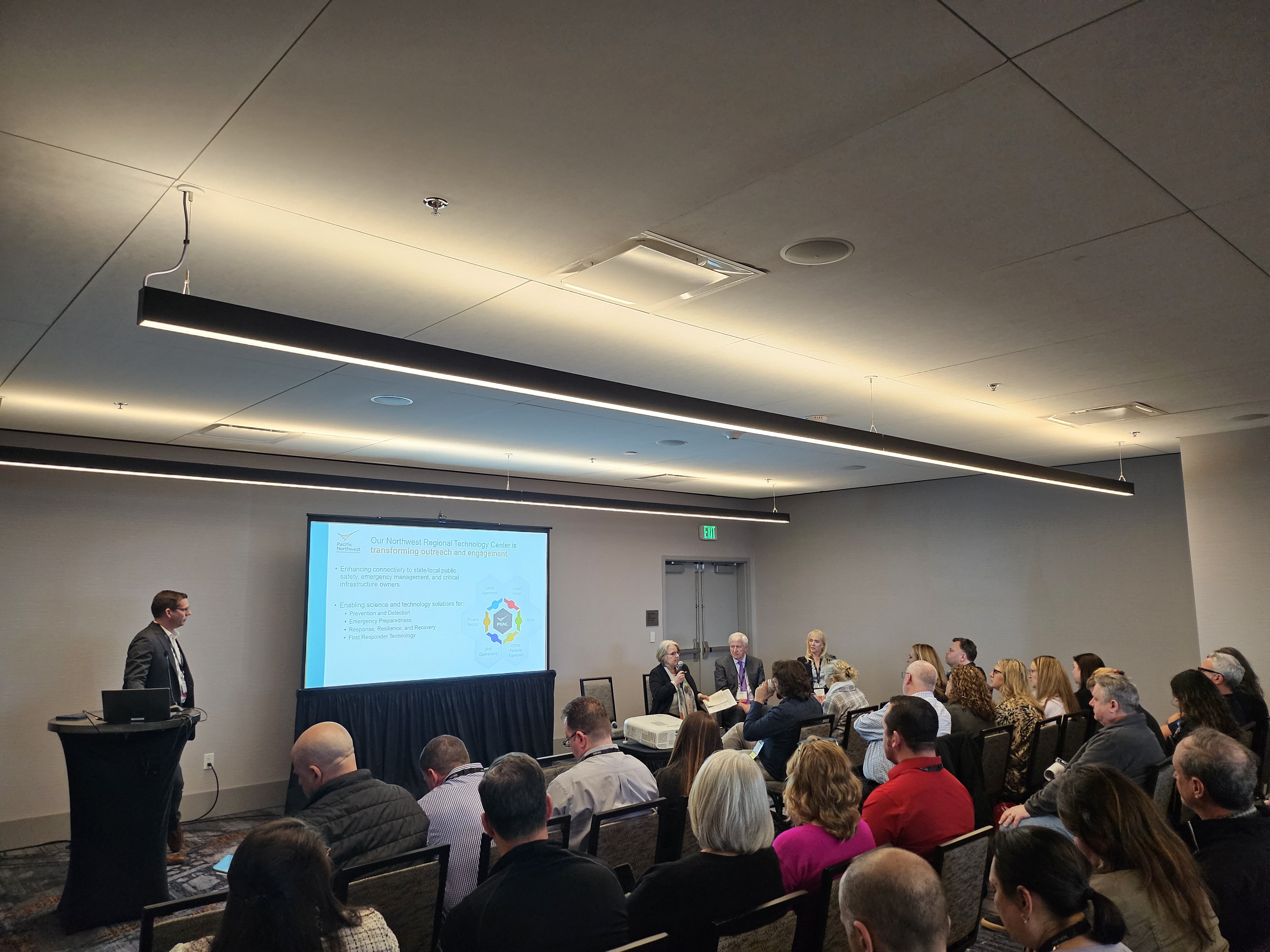Partnerships Shaping Future of Emergency Management
Collaborations for advancing resilient solutions

A panel at the Partners in Emergency Preparedness Conference convened Ryan Eddy, Ann Lesperance, Robert Ezelle, and Curry Mayer for a discussion on the value of partnerships for the future of emergency management.
(Composite image by Shannon Colson | Pacific Northwest National Laboratory)
Against a backdrop of compounding disasters—an earthquake in Taiwan, a bridge collapse in Baltimore, to name a few—the 2024 Partners in Emergency Preparedness Conference convened emergency management practitioners to discuss the future of preparedness and response. Advisors from Pacific Northwest National Laboratory (PNNL) joined representatives from Washington State in a panel to discuss how partnerships with national laboratories are enabling science and technology solutions.
“The emergency management threat landscape is changing and so is technology. National laboratories like PNNL play a unique role in leading research and building partnerships to better understand the evolving hazards and technology needs,” said panel moderator Ryan Eddy, PNNL director of homeland security programs.
In the panel “Partnering for the Future of Emergency Management,” Eddy was joined by panelists Ann Lesperance, director of PNNL’s Northwest Regional Technology Center; Curry Mayer, director of the Seattle Office of Emergency Management; and Robert Ezelle, director of the Washington Military Department Emergency Management Division. Panelists shared insights into technology challenges and opportunities facing their professions and highlighted current partnerships and research projects exploring the future.

“The challenges are always changing. Today we might be focused on cybersecurity and how we protect our critical infrastructure, and tomorrow it might be something different,” Ezelle said. “I appreciate that PNNL has the time and the technical expertise to give perspective on challenges we face at the state level and where science and technology might help.”
Participants also spoke about the role national laboratories, like PNNL in the Pacific Northwest, have in advancing first responder and emergency management solutions.
“Both new problems and new solutions have to do with technology. Unfortunately, emergency management organizations don’t typically have researchers on staff to find, vet, and understand what’s new,” said Mayer. “National laboratories are a partner that we can tap into. They have researchers, innovators, and technical experts that will sit with us and talk about what problems we’re facing and help us see and explore where we can better work with technology.”
“PNNL has a long-standing history of partnering in our region but also across the nation to close the gap between emerging threats and challenges and science and technology solutions. We’ve put real focus on connecting with first responders and emergency managers, and it’s paid off—it’s resulted in numerous technology pilots, operational field assessments, regional workshops, and more,” said Lesperance.
To learn more about PNNL’s Northwest Regional Technology Center and emergency preparedness and response collaborations, visit http://www.pnnl.gov/projects/nwrtc.
Published: April 18, 2024